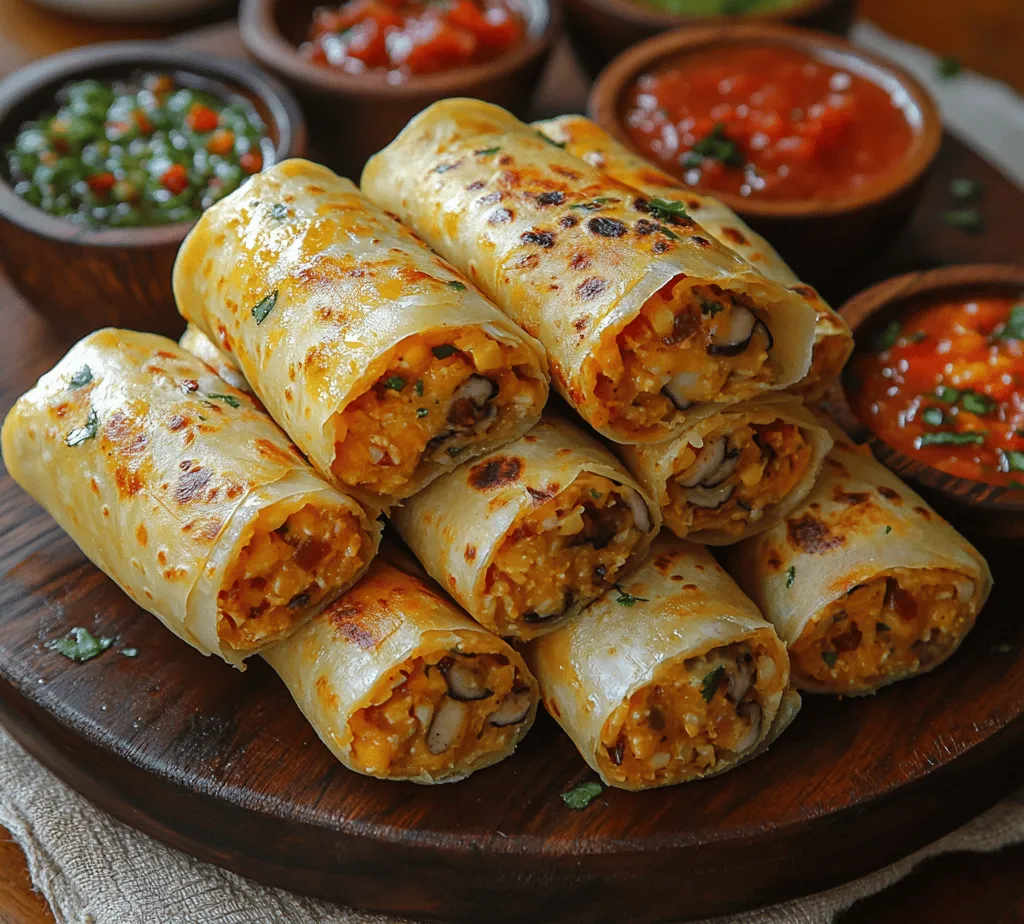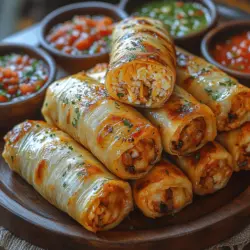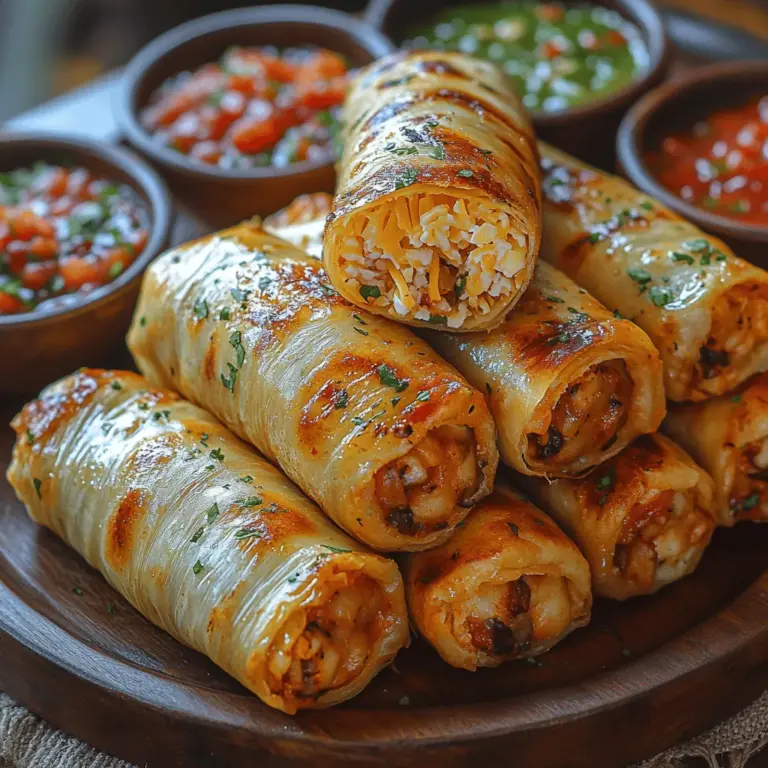Introduction
Corundas are a beloved traditional Mexican dish that brings the vibrant flavors and rich culinary heritage of Mexico to life. These corn-based delights, often served in the shape of triangles, are a staple in the Michoacán region and have become a symbol of comfort and family gatherings. The preparation of corundas is not just a cooking task; it is an experience steeped in cultural significance and shared memories, making it a cherished dish among many Mexican families.
Historically, corundas have their roots in indigenous cooking practices, where corn has held a central role in the diet and culture of Mesoamerican peoples for centuries. The process of transforming masa (corn dough) into corundas is a testament to the ingenuity and resourcefulness of traditional Mexican cuisine. Their unique structure and texture set them apart from other similar dishes like tamales and huaraches, making corundas a delightful addition to any culinary repertoire.
One of the most appealing aspects of corundas is their versatility. They can be enjoyed as a savory breakfast option, a hearty side dish, or even a satisfying main course, depending on the fillings and accompaniments. Whether you prefer them filled with cheese, mushrooms, or chicharrón, corundas offer endless possibilities for customization. Making corundas at home is not only gratifying but also a way to connect with the rich traditions of Mexican cooking, bringing family and friends together in the kitchen.
Understanding Corundas
So, what exactly are corundas? They are soft, triangle-shaped dumplings made primarily from masa harina, a finely ground corn flour. The preparation of corundas is similar to that of tamales; however, corundas are typically larger and have a distinct triangular shape, which sets them apart. Unlike tamales, which are wrapped in corn husks and steamed, corundas are often cooked in a pot with the corn husks placed vertically around them, allowing for a unique steaming process that enhances their flavor and texture.
Corundas are deeply rooted in the Michoacán region, where they are often served alongside rich salsas, such as red or green salsa, that add a tangy kick to the dish. They can be filled with a variety of ingredients, making them adaptable to personal tastes and dietary preferences. Though corundas have a special place in Michoacán, variations of this dish can be found throughout Mexico, each with its own regional twist.
When comparing corundas to similar dishes, tamales are perhaps the most well-known counterpart. While both are made with masa, tamales are usually wrapped tightly in corn husks and can be filled with a variety of meats, cheeses, or vegetables. Huaraches, on the other hand, are a type of tortilla topped with various ingredients, including meats and salsas, and are not encased like corundas or tamales.
Masa harina is a crucial ingredient in the preparation of corundas and other staple Mexican dishes. This finely ground corn flour is made from nixtamalized corn, which has been treated with an alkaline solution to enhance its nutritional value and improve its flavor. The process of nixtamalization not only contributes to the distinct taste of masa harina but also enhances the texture of corundas, allowing them to hold their shape while remaining soft and pliable.
Ingredients Explained
Creating corundas requires a few essential ingredients, each playing a vital role in achieving the perfect balance of flavors and textures. Below is a detailed breakdown of these key components:
Masa Harina
Masa harina is the foundation of corundas, providing the necessary structure and flavor. When selecting masa harina, look for high-quality brands that specify “masa harina” on the packaging. There are two main types of masa harina: white and yellow. White masa harina is made from white corn and is commonly used for tamales and corundas, while yellow masa harina is derived from yellow corn and has a slightly sweeter flavor. If you’re unable to find masa harina, you can substitute it with finely ground cornmeal, but keep in mind that the texture and flavor may differ.
Broth: Vegetable vs. Chicken
The choice of broth is essential for enhancing the flavor of the corundas. Vegetable broth is an excellent option for those seeking a vegetarian or vegan alternative, while chicken broth adds a rich, savory depth to the dish. When selecting broth, consider the flavor profiles and dietary needs of your guests. Homemade broth is preferable, but high-quality store-bought options can also work well.
Lard or Vegetable Shortening
To achieve the right texture, corundas require a source of fat. Traditionally, lard is used in Mexican cooking, lending a rich flavor and moist texture to the masa. However, for a plant-based version, vegetable shortening or coconut oil can be used as a substitute. The key is to incorporate fat into the masa dough, which results in a tender and flavorful corunda.
Dried Corn Husks
Dried corn husks are essential for cooking corundas. They are used to wrap the corundas during the steaming process, imparting a subtle corn flavor while keeping the dumplings moist. It is crucial to select high-quality corn husks, ideally those that are intact and free of holes. Before using them, the husks must be soaked in warm water to soften, making them pliable for wrapping.
Optional Fillings
One of the joys of making corundas is the opportunity to explore various fillings. Common options include cheese, sautéed mushrooms, or chicharrón (fried pork skin). The choice of filling allows for creative expression and personalization, making every batch of corundas unique. Consider combining different ingredients to create exciting flavor combinations, or even experiment with seasonal vegetables for a fresh twist.
Salsa Options
Salsas are an essential accompaniment to corundas, adding a burst of flavor and spice. The choice between red and green salsa can significantly impact the overall taste of the dish. Red salsa, often made with roasted tomatoes, chiles, and spices, offers a smoky and rich flavor profile. In contrast, green salsa, made with tomatillos and fresh herbs, provides a bright and tangy taste. Both options complement the corundas beautifully, enhancing their flavor and making them a delightful culinary experience.
Preparation Steps for Corundas
Now that we have covered the essential ingredients, let’s dive into the preparation steps involved in making traditional Mexican corundas.
Preparing the Corn Husks
The first step in preparing corundas is to prep the dried corn husks. Start by selecting high-quality corn husks, ensuring they are whole and free from damage. The soaking process is crucial for making the husks pliable, allowing you to wrap the corundas securely.
1. Soak the Corn Husks: Place the dried husks in a large bowl and cover them with warm water. Allow them to soak for at least 30 minutes, or until they are soft and flexible. If you plan to make a large batch, consider soaking them overnight for optimal pliability.
2. Drain and Dry: Once the husks are adequately soaked, drain them and gently pat them dry with a clean kitchen towel. Set aside a few of the largest husks for wrapping the corundas, and keep the rest for additional layers in the pot.
Creating the Masa Dough
Next, we will focus on creating the masa dough, which serves as the base for the corundas. The right consistency is crucial for achieving the desired texture.
1. Combine Ingredients: In a large mixing bowl, combine the masa harina, broth (vegetable or chicken), and lard or vegetable shortening. Mix the ingredients using your hands or a wooden spoon until the mixture is uniform.
2. Knead the Dough: Transfer the masa mixture onto a clean surface and begin kneading it for about 5-10 minutes. The dough should be soft and pliable, but not sticky. If the dough feels too dry, gradually add more broth, one tablespoon at a time. Conversely, if it is too sticky, incorporate a little more masa harina until the consistency is just right.
3. Test the Dough: A quick way to ensure your masa dough is ready is to perform the “float test.” Take a small piece of the dough and roll it into a ball, then drop it into a glass of water. If it floats, the dough is perfect for making corundas. If it sinks, continue kneading and adjusting until it passes the test.
Assembling the Corundas
With the masa dough prepared, it’s time to assemble the corundas. This step is where the fun begins, as you can get creative with fillings!
1. Prepare the Filling: If you are using a filling, prepare it ahead of time. For example, if you choose cheese, ensure it is shredded and ready to use. If using vegetables, sauté them until tender and flavorful.
2. Form the Corundas: Take a soaked corn husk and lay it flat on a clean surface. Scoop about 2-3 tablespoons of masa dough onto the center of the husk, flattening it slightly. Add a spoonful of your chosen filling on top of the masa.
3. Fold and Wrap: To wrap the corunda, fold the sides of the corn husk over the masa and filling, creating a triangular shape. Gently press down to secure it. Then, fold the bottom of the husk up towards the top, securing the filling inside. Repeat the process with the remaining husks and dough.
4. Prepare for Steaming: In a large pot, add a few inches of water and place a steaming rack or an inverted plate at the bottom. Arrange the wrapped corundas vertically in the pot, ensuring they are standing upright. You can layer additional corn husks over the corundas to trap steam and keep them moist during cooking.
5. Steam the Corundas: Cover the pot with a lid and bring the water to a boil. Once boiling, reduce the heat to medium-low and steam the corundas for approximately 45 minutes to 1 hour, or until the masa is cooked through and has a firm texture.
Through these steps, you’ll create a dish that embodies the warmth and richness of Mexican culinary traditions. Enjoy the process, and get ready for the delicious aroma of corundas to fill your kitchen. As you embark on this culinary adventure, remember that making corundas is not just about the final product—it’s about the joy of cooking, sharing, and celebrating the flavors of Mexico.

Visual Guide for Folding and Wrapping Techniques
Folding and wrapping corundas is a crucial step that not only ensures the filling is secure but also affects the final presentation. Here’s a step-by-step visual guide to help you perfect your technique:
1. Prepare the Corn Husk: Soak the dried corn husks in warm water for at least 30 minutes to make them pliable. This will prevent them from tearing when you wrap the corundas.
2. Take a Husk: Lay a softened corn husk flat on a clean surface with the wider end facing you.
3. Add the Filling: Spoon your desired filling onto the center of the husk. Aim for about 2-3 tablespoons, depending on the size of your husk.
4. Fold the Sides: Bring the left and right edges of the husk towards the center over the filling. Make sure they overlap slightly.
5. Roll It Up: Starting from the bottom (the wider end), roll the husk upwards towards the narrow tip, encasing the filling securely.
6. Secure the Ends: Fold the narrow tip under the rolled corunda or tie it with a piece of kitchen twine or another husk strip to keep it closed during cooking.
By mastering these folding and wrapping techniques, you can ensure that your corundas are not only delicious but also visually appealing.
Variations in Assembly for Different Fillings
While the traditional corundas are often filled with cheese or meat, there are numerous variations depending on regional preferences. Here are a few ideas for alternate fillings:
– Vegetarian Option: Fill with sautéed mushrooms, spinach, and cheese for a hearty vegetarian version.
– Sweet Corundas: For a dessert twist, use a mixture of sweetened cream cheese and diced fruits like peaches or apples.
– Spicy Fillings: Incorporate chorizo, jalapeños, and queso fresco for a spicier take on corundas.
Feel free to experiment with various fillings, adjusting the seasoning to suit your taste.
Cooking Techniques
Overview of Steaming Methods
Steaming is the most common and effective cooking method for corundas, preserving moisture and flavor. Here’s a closer look at how to steam corundas perfectly.
Comparison of Steaming vs. Boiling
Steaming is generally preferred over boiling for corundas. While boiling can lead to soggy masa, steaming allows for even cooking and helps maintain the integrity of the flavor. Steamed corundas tend to have a firmer texture, making them more enjoyable to eat.
Using a Steaming Rack or Towel: Best Practices for Optimal Results
1. Steaming Rack: If you have a steaming rack, place it at the bottom of a pot filled with water, ensuring the water does not touch the rack. Arrange the corundas upright on the rack while they steam.
2. Using a Towel: If a rack isn’t available, place a clean kitchen towel at the bottom of the pot, followed by a layer of corn husks. This technique prevents direct contact with boiling water and allows the steam to circulate.
Cooking Time and How to Check for Doneness
Steam the corundas for about 45-60 minutes. To check for doneness, carefully unwrap one and ensure the masa has firmed up and no longer appears wet or sticky.
Importance of Temperature Control While Steaming
Maintaining a steady temperature is crucial for successful steaming. Too high a temperature may cause the water to evaporate too quickly, leading to uneven cooking, while too low a temperature could result in undercooked masa. Keep an eye on the water level and adjust the heat as needed.
Serving Suggestions
Creative Ways to Serve Corundas
Presenting corundas can enhance the dining experience. Here are some creative serving ideas:
1. Festive Presentation: Arrange corundas on a colorful platter with fresh herbs, such as cilantro, and lime wedges for a vibrant display.
2. Traditional Accompaniments: Pair corundas with traditional sides like refried beans, Mexican rice, or a simple salad of diced tomatoes and onions.
3. Customizing the Experience: Offer a variety of salsas, such as salsa verde, pico de gallo, or a smoky chipotle sauce. Encourage guests to top their corundas according to their taste preferences.
Cultural Context and Variations
Regional Differences in Corunda Recipes Across Mexico
Corundas are a beloved dish throughout Mexico, with variations reflecting local ingredients and culinary traditions. In Michoacán, they are often filled with cheese and served with a rich tomato sauce. In contrast, in other regions, you might find them stuffed with meats or vegetables, showcasing the diverse flavors of Mexican cuisine.
Personal Anecdotes or Stories Related to Corundas from Mexican Families
Many families have their own cherished recipes for corundas passed down through generations. These stories often involve gathering around the kitchen, sharing laughter and memories while preparing the masa and fillings. Such traditions highlight the communal aspect of cooking, making corundas a dish that brings people together.
Celebrating Festivals or Events Where Corundas Are Traditionally Served
Corundas are often served during special occasions, such as weddings, festivals, and family gatherings. Their rich flavors and comforting textures make them a perfect dish for celebration, symbolizing unity and togetherness within Mexican culture.
Nutritional Information
Breakdown of Calories and Nutritional Value Per Serving
A serving of traditional corundas (approximately two corundas) contains around 250-300 calories, depending on the filling used. Here’s a general breakdown:
– Calories: 250-300
– Protein: 8-10g (varies with filling)
– Carbohydrates: 40-50g
– Fat: 6-10g (varies with filling)
Health Benefits of Ingredients Used in Corundas
The primary ingredients in corundas, including masa harina and corn husks, are gluten-free and rich in fiber. Corn is also a source of essential vitamins and minerals, making corundas a nourishing choice when filled with healthy ingredients.
Dietary Considerations (Gluten-Free, Vegetarian, etc.)
Corundas can be easily adapted for various dietary needs. They are inherently gluten-free and can be filled with a variety of vegetarian or vegan options, making them accessible to those with dietary restrictions.
Conclusion
Corundas hold a special place in Mexican cuisine, embodying the heart and soul of traditional cooking. They are not just a dish but a representation of culture, family, and celebration. Making corundas at home allows you to explore your creativity with different fillings and flavors while sharing a piece of Mexican tradition with your loved ones.
As you embark on your journey to create this delightful treat, remember that the joy of cooking comes from experimentation and connection. So gather your ingredients, invite friends or family to join, and savor the experience of making and enjoying corundas together. Embrace the flavors, the stories, and the joy that comes from sharing food and traditions with those you care about.

